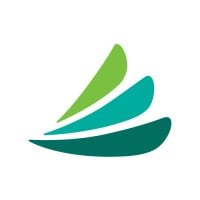
Postal Savings Bank of China Co., Ltd. Company Cyber Security Posture
psbc.comPostal Savings Bank of China Co., Ltd. also known as PSBC is a commercial retail bank founded in 2007 and headquartered in Beijing. It provides basic financial services, especially to small and medium enterprises, rural[1] and low income customers. As of December 31, 2017, PSBC has 39,798[2] branches covering all regions of China. PSBC was set up with an initial capital of RMB20 billion in 2007 from the State Post Bureau. Today it has RMB1.5 trillion in deposits and the second largest number of branches, after the Agricultural Bank of China. During the Global Financial Crisis, the government took several measures to spread its national economic stimulus plan specifically to rural areas. This included using microfinance services provided by the Postal Savings Bank as a tool for national development and poverty reduction. The bank with its extremely broad reach also assists China’s credit cooperatives in their microcredit schemes. On December 8, 2015, China Postal Savings Bank, through issuing pro-float stock, received an injection of investment from the Temasek Holdings of Singapore, UBS, the Canada Pension Plan Investment Board, the International Finance Corporation, Morgan Stanley, DBS Bank, Tencent, Ant Financial Services Group, China Life and China Telecom, with a total investment of 45.1 billion yuan. These "strategic investors" together held a 16.92% stake in the company at the time of purchase. The stock was listed through an initial public offering on the Stock Exchange of Hong Kong on September 30, 2016. Prior to its listing, it was the largest unlisted Chinese bank.[3] Xuewen Zhang and Hong Lao serve as Vice Presidents of the bank and co-executive directors.
PSBCCL Company Details
postal-savings-bank-of-china-co-ltd-,
36 employees
135.0
52
Financial Services
psbc.com
Scan still pending
POS_2879248
In-progress
Between 800 and 900
This score is AI-generated and less favored by cyber insurers, who prefer the TPRM score.
 PSBCCL Global Score
PSBCCL Global Score.png)

Postal Savings Bank of China Co., Ltd. Company Scoring based on AI Models
| Model Name | Date | Description | Current Score Difference | Score |
|---|---|---|---|---|
| AVERAGE-Industry | 03-12-2025 | This score represents the average cybersecurity rating of companies already scanned within the same industry. It provides a benchmark to compare an individual company's security posture against its industry peers. | N/A | Between 800 and 900 |
Postal Savings Bank of China Co., Ltd. Company Cyber Security News & History
| Entity | Type | Severity | Impact | Seen | Url ID | Details | View |
|---|
Postal Savings Bank of China Co., Ltd. Company Subsidiaries

Postal Savings Bank of China Co., Ltd. also known as PSBC is a commercial retail bank founded in 2007 and headquartered in Beijing. It provides basic financial services, especially to small and medium enterprises, rural[1] and low income customers. As of December 31, 2017, PSBC has 39,798[2] branches covering all regions of China. PSBC was set up with an initial capital of RMB20 billion in 2007 from the State Post Bureau. Today it has RMB1.5 trillion in deposits and the second largest number of branches, after the Agricultural Bank of China. During the Global Financial Crisis, the government took several measures to spread its national economic stimulus plan specifically to rural areas. This included using microfinance services provided by the Postal Savings Bank as a tool for national development and poverty reduction. The bank with its extremely broad reach also assists China’s credit cooperatives in their microcredit schemes. On December 8, 2015, China Postal Savings Bank, through issuing pro-float stock, received an injection of investment from the Temasek Holdings of Singapore, UBS, the Canada Pension Plan Investment Board, the International Finance Corporation, Morgan Stanley, DBS Bank, Tencent, Ant Financial Services Group, China Life and China Telecom, with a total investment of 45.1 billion yuan. These "strategic investors" together held a 16.92% stake in the company at the time of purchase. The stock was listed through an initial public offering on the Stock Exchange of Hong Kong on September 30, 2016. Prior to its listing, it was the largest unlisted Chinese bank.[3] Xuewen Zhang and Hong Lao serve as Vice Presidents of the bank and co-executive directors.
Access Data Using Our API

Get company history
.png)
PSBCCL Cyber Security News
China Issued Draft Administrative Measures for Reporting of Cybersecurity Incidents in Financial Business Operation
The People's Bank of China recently released the Draft Administrative Measures for Reporting of Cybersecurity Incidents in the Operational Areas ...
China's biggest state banks to raise $71.6 bln to boost capital
Four of China's largest state-owned banks said on Sunday they plan to raise a combined 520 billion yuan ($71.60 billion) in private ...
2024 Investment Climate Statements: China
Although inbound FDI dropped in 2023, the People's Republic of China (PRC) remained the number four Foreign Direct Investment (FDI) destination in the world ...
Billion-dollar injection to further bolster Chinese banks' capital buffers
Chinese banks are set for further bolstering of their capital cushions as the government plans to inject billions of dollars into big banks ...
Exclusive: Deutsche Bank talks on China JV end over disagreement on control, sources say
Exclusive: Deutsche Bank talks on China JV end over disagreement on control, sources say · Deutsche Bank's fund arm DWS had targeted JV in China ...
Stars Of China 2022
ICBC has been named this year's Best Domestic Bank for Belt and Road. Every bank supporting Belt and Road is committed to projecting China's global trade.
China Mobile splashes $557M on network security firm
Sitting on a $25 billion cash pile, China Mobile has spent $7.9 billion this year on corporate acquisitions and investments.
China’s Postal Savings Bank Taps Overseas Investors for $7.6 Billion in Capital
Postal Savings Bank of China Co., a state-owned bank, is raising up to $7.6 billion in one of the largest-ever sales of offshore securities ...
Moody's cuts outlook for eight China banks on potential credit quality decline; downgrades Hong Kong too
Moody's cuts outlook for eight China banks on potential credit quality decline; downgrades Hong Kong too · Moody's Investors Service cut its ...

PSBCCL Similar Companies

CareCredit
CareCredit, a Synchrony solution, is a leading health and wellness credit card with flexible financing options that patients or clients can use to finance the care they want and need without delaying appointments or treatment for themselves or their pets.* With over 12 million cardholder accounts

The Citco Group Limited
Our heritage, since founding a civil law notary practice in the 1940s to establishing the Curacao International Trust Company in the 1960s, is built on challenging paradigms and delivering exceptional service within the financial and professional services industry. Today, we continue to pioneer awar

Swedbank
Since 1820 Swedbank has been the bank for the many households and businesses. We are a modern financial services platform focused on customer satisfaction. Our goal is to encourage people to save for a better future and we aim to help people, businesses and society to grow by promoting a healthy and

IIFL (India Infoline Group)
IIFL group is one of India's largest diversified financial services conglomerates with three listed entities - IIFL Finance, IIFL Securities and 360 ONE Wealth & Asset Management. Founded in 1995 by Nirmal Jain as a small research house, today IIFL Group employs over 40000 people and caters to over

Synechron
At Synechron, we believe in the power of digital to transform businesses for the better. Our global consulting firm combines creativity and innovative technology to deliver industry-leading digital solutions. Synechron’s progressive technologies and optimization strategies span end-to-end Artificial

Broadridge
Broadridge Financial Solutions (NYSE: BR) is a global technology leader with the trusted expertise and transformative technology to help clients and the financial services industry operate, innovate, and grow. We power investing, governance, and communications for our clients – driving operational r

Frequently Asked Questions (FAQ) on Cybersecurity Incidents
PSBCCL CyberSecurity History Information
Total Incidents: According to Rankiteo, PSBCCL has faced 0 incidents in the past.
Incident Types: As of the current reporting period, PSBCCL has not encountered any cybersecurity incidents.
Total Financial Loss: The total financial loss from these incidents is estimated to be {total_financial_loss}.
Cybersecurity Posture: The company's overall cybersecurity posture is described as Postal Savings Bank of China Co., Ltd. also known as PSBC is a commercial retail bank founded in 2007 and headquartered in Beijing. It provides basic financial services, especially to small and medium enterprises, rural[1] and low income customers. As of December 31, 2017, PSBC has 39,798[2] branches covering all regions of China. PSBC was set up with an initial capital of RMB20 billion in 2007 from the State Post Bureau. Today it has RMB1.5 trillion in deposits and the second largest number of branches, after the Agricultural Bank of China. During the Global Financial Crisis, the government took several measures to spread its national economic stimulus plan specifically to rural areas. This included using microfinance services provided by the Postal Savings Bank as a tool for national development and poverty reduction. The bank with its extremely broad reach also assists China’s credit cooperatives in their microcredit schemes. On December 8, 2015, China Postal Savings Bank, through issuing pro-float stock, received an injection of investment from the Temasek Holdings of Singapore, UBS, the Canada Pension Plan Investment Board, the International Finance Corporation, Morgan Stanley, DBS Bank, Tencent, Ant Financial Services Group, China Life and China Telecom, with a total investment of 45.1 billion yuan. These "strategic investors" together held a 16.92% stake in the company at the time of purchase. The stock was listed through an initial public offering on the Stock Exchange of Hong Kong on September 30, 2016. Prior to its listing, it was the largest unlisted Chinese bank.[3] Xuewen Zhang and Hong Lao serve as Vice Presidents of the bank and co-executive directors. .
Detection and Response: The company detects and responds to cybersecurity incidents through {description_of_detection_and_response_process}.
Incident Details
Incident 1: Ransomware Attack
Title: {Incident_Title}
Description: {Brief_description_of_the_incident}
Date Detected: {Detection_Date}
Date Publicly Disclosed: {Disclosure_Date}
Date Resolved: {Resolution_Date}
Type: {Type_of_Attack}
Attack Vector: {Attack_Vector}
Vulnerability Exploited: {Vulnerability}
Threat Actor: {Threat_Actor}
Motivation: {Motivation}
Incident 2: Data Breach
Title: {Incident_Title}
Description: {Brief_description_of_the_incident}
Date Detected: {Detection_Date}
Date Publicly Disclosed: {Disclosure_Date}
Date Resolved: {Resolution_Date}
Type: {Type_of_Attack}
Attack Vector: {Attack_Vector}
Vulnerability Exploited: {Vulnerability}
Threat Actor: {Threat_Actor}
Motivation: {Motivation}
Common Attack Types: As of now, the company has not encountered any reported incidents involving common cyberattacks.
Identification of Attack Vectors: The company identifies the attack vectors used in incidents through {description_of_identification_process}.
Impact of the Incidents
Incident 1: Ransomware Attack
Financial Loss: {Financial_Loss}
Data Compromised: {Data_Compromised}
Systems Affected: {Systems_Affected}
Downtime: {Downtime}
Operational Impact: {Operational_Impact}
Conversion Rate Impact: {Conversion_Rate_Impact}
Revenue Loss: {Revenue_Loss}
Customer Complaints: {Customer_Complaints}
Brand Reputation Impact: {Brand_Reputation_Impact}
Legal Liabilities: {Legal_Liabilities}
Identity Theft Risk: {Identity_Theft_Risk}
Payment Information Risk: {Payment_Information_Risk}
Incident 2: Data Breach
Financial Loss: {Financial_Loss}
Data Compromised: {Data_Compromised}
Systems Affected: {Systems_Affected}
Downtime: {Downtime}
Operational Impact: {Operational_Impact}
Conversion Rate Impact: {Conversion_Rate_Impact}
Revenue Loss: {Revenue_Loss}
Customer Complaints: {Customer_Complaints}
Brand Reputation Impact: {Brand_Reputation_Impact}
Legal Liabilities: {Legal_Liabilities}
Identity Theft Risk: {Identity_Theft_Risk}
Payment Information Risk: {Payment_Information_Risk}
Average Financial Loss: The average financial loss per incident is {average_financial_loss}.
Commonly Compromised Data Types: The types of data most commonly compromised in incidents are {list_of_commonly_compromised_data_types}.
Incident 1: Ransomware Attack
Entity Name: {Entity_Name}
Entity Type: {Entity_Type}
Industry: {Industry}
Location: {Location}
Size: {Size}
Customers Affected: {Customers_Affected}
Incident 2: Data Breach
Entity Name: {Entity_Name}
Entity Type: {Entity_Type}
Industry: {Industry}
Location: {Location}
Size: {Size}
Customers Affected: {Customers_Affected}
Response to the Incidents
Incident 1: Ransomware Attack
Incident Response Plan Activated: {Yes/No}
Third Party Assistance: {Yes/No}
Law Enforcement Notified: {Yes/No}
Containment Measures: {Containment_Measures}
Remediation Measures: {Remediation_Measures}
Recovery Measures: {Recovery_Measures}
Communication Strategy: {Communication_Strategy}
Adaptive Behavioral WAF: {Adaptive_Behavioral_WAF}
On-Demand Scrubbing Services: {On_Demand_Scrubbing_Services}
Network Segmentation: {Network_Segmentation}
Enhanced Monitoring: {Enhanced_Monitoring}
Incident 2: Data Breach
Incident Response Plan Activated: {Yes/No}
Third Party Assistance: {Yes/No}
Law Enforcement Notified: {Yes/No}
Containment Measures: {Containment_Measures}
Remediation Measures: {Remediation_Measures}
Recovery Measures: {Recovery_Measures}
Communication Strategy: {Communication_Strategy}
Adaptive Behavioral WAF: {Adaptive_Behavioral_WAF}
On-Demand Scrubbing Services: {On_Demand_Scrubbing_Services}
Network Segmentation: {Network_Segmentation}
Enhanced Monitoring: {Enhanced_Monitoring}
Incident Response Plan: The company's incident response plan is described as {description_of_incident_response_plan}.
Third-Party Assistance: The company involves third-party assistance in incident response through {description_of_third_party_involvement}.
Data Breach Information
Incident 2: Data Breach
Type of Data Compromised: {Type_of_Data}
Number of Records Exposed: {Number_of_Records}
Sensitivity of Data: {Sensitivity_of_Data}
Data Exfiltration: {Yes/No}
Data Encryption: {Yes/No}
File Types Exposed: {File_Types}
Personally Identifiable Information: {Yes/No}
Prevention of Data Exfiltration: The company takes the following measures to prevent data exfiltration: {description_of_prevention_measures}.
Handling of PII Incidents: The company handles incidents involving personally identifiable information (PII) through {description_of_handling_process}.
Ransomware Information
Incident 1: Ransomware Attack
Ransom Demanded: {Ransom_Amount}
Ransom Paid: {Ransom_Paid}
Ransomware Strain: {Ransomware_Strain}
Data Encryption: {Yes/No}
Data Exfiltration: {Yes/No}
Ransom Payment Policy: The company's policy on paying ransoms in ransomware incidents is described as {description_of_ransom_payment_policy}.
Data Recovery from Ransomware: The company recovers data encrypted by ransomware through {description_of_data_recovery_process}.
Regulatory Compliance
Incident 1: Ransomware Attack
Regulations Violated: {Regulations_Violated}
Fines Imposed: {Fines_Imposed}
Legal Actions: {Legal_Actions}
Regulatory Notifications: {Regulatory_Notifications}
Incident 2: Data Breach
Regulations Violated: {Regulations_Violated}
Fines Imposed: {Fines_Imposed}
Legal Actions: {Legal_Actions}
Regulatory Notifications: {Regulatory_Notifications}
Regulatory Frameworks: The company complies with the following regulatory frameworks regarding cybersecurity: {list_of_regulatory_frameworks}.
Ensuring Regulatory Compliance: The company ensures compliance with regulatory requirements through {description_of_compliance_measures}.
Lessons Learned and Recommendations
Incident 1: Ransomware Attack
Lessons Learned: {Lessons_Learned}
Incident 2: Data Breach
Lessons Learned: {Lessons_Learned}
Incident 1: Ransomware Attack
Recommendations: {Recommendations}
Incident 2: Data Breach
Recommendations: {Recommendations}
Key Lessons Learned: The key lessons learned from past incidents are {list_of_key_lessons_learned}.
Implemented Recommendations: The company has implemented the following recommendations to improve cybersecurity: {list_of_implemented_recommendations}.
References
Additional Resources: Stakeholders can find additional resources on cybersecurity best practices at {list_of_additional_resources}.
Investigation Status
Incident 1: Ransomware Attack
Investigation Status: {Investigation_Status}
Incident 2: Data Breach
Investigation Status: {Investigation_Status}
Communication of Investigation Status: The company communicates the status of incident investigations to stakeholders through {description_of_communication_process}.
Stakeholder and Customer Advisories
Incident 1: Ransomware Attack
Stakeholder Advisories: {Stakeholder_Advisories}
Customer Advisories: {Customer_Advisories}
Incident 2: Data Breach
Stakeholder Advisories: {Stakeholder_Advisories}
Customer Advisories: {Customer_Advisories}
Advisories Provided: The company provides the following advisories to stakeholders and customers following an incident: {description_of_advisories_provided}.
Initial Access Broker
Incident 1: Ransomware Attack
Entry Point: {Entry_Point}
Reconnaissance Period: {Reconnaissance_Period}
Backdoors Established: {Backdoors_Established}
High Value Targets: {High_Value_Targets}
Data Sold on Dark Web: {Yes/No}
Incident 2: Data Breach
Entry Point: {Entry_Point}
Reconnaissance Period: {Reconnaissance_Period}
Backdoors Established: {Backdoors_Established}
High Value Targets: {High_Value_Targets}
Data Sold on Dark Web: {Yes/No}
Monitoring and Mitigation of Initial Access Brokers: The company monitors and mitigates the activities of initial access brokers through {description_of_monitoring_and_mitigation_measures}.
Post-Incident Analysis
Incident 1: Ransomware Attack
Root Causes: {Root_Causes}
Corrective Actions: {Corrective_Actions}
Incident 2: Data Breach
Root Causes: {Root_Causes}
Corrective Actions: {Corrective_Actions}
Post-Incident Analysis Process: The company's process for conducting post-incident analysis is described as {description_of_post_incident_analysis_process}.
Corrective Actions Taken: The company has taken the following corrective actions based on post-incident analysis: {list_of_corrective_actions_taken}.
Additional Questions
General Information
Ransom Payment History: The company has {paid/not_paid} ransoms in the past.
Last Ransom Demanded: The amount of the last ransom demanded was {last_ransom_amount}.
Last Attacking Group: The attacking group in the last incident was {last_attacking_group}.
Incident Details
Most Recent Incident Detected: The most recent incident detected was on {most_recent_incident_detected_date}.
Most Recent Incident Publicly Disclosed: The most recent incident publicly disclosed was on {most_recent_incident_publicly_disclosed_date}.
Most Recent Incident Resolved: The most recent incident resolved was on {most_recent_incident_resolved_date}.
Impact of the Incidents
Highest Financial Loss: The highest financial loss from an incident was {highest_financial_loss}.
Most Significant Data Compromised: The most significant data compromised in an incident was {most_significant_data_compromised}.
Most Significant System Affected: The most significant system affected in an incident was {most_significant_system_affected}.
Response to the Incidents
Third-Party Assistance in Most Recent Incident: The third-party assistance involved in the most recent incident was {third_party_assistance_in_most_recent_incident}.
Containment Measures in Most Recent Incident: The containment measures taken in the most recent incident were {containment_measures_in_most_recent_incident}.
Data Breach Information
Most Sensitive Data Compromised: The most sensitive data compromised in a breach was {most_sensitive_data_compromised}.
Number of Records Exposed: The number of records exposed in the most significant breach was {number_of_records_exposed}.
Ransomware Information
Highest Ransom Demanded: The highest ransom demanded in a ransomware incident was {highest_ransom_demanded}.
Highest Ransom Paid: The highest ransom paid in a ransomware incident was {highest_ransom_paid}.
Regulatory Compliance
Highest Fine Imposed: The highest fine imposed for a regulatory violation was {highest_fine_imposed}.
Most Significant Legal Action: The most significant legal action taken for a regulatory violation was {most_significant_legal_action}.
Lessons Learned and Recommendations
Most Significant Lesson Learned: The most significant lesson learned from past incidents was {most_significant_lesson_learned}.
Most Significant Recommendation Implemented: The most significant recommendation implemented to improve cybersecurity was {most_significant_recommendation_implemented}.
References
Most Recent Source: The most recent source of information about an incident is {most_recent_source}.
Most Recent URL for Additional Resources: The most recent URL for additional resources on cybersecurity best practices is {most_recent_url}.
Investigation Status
Current Status of Most Recent Investigation: The current status of the most recent investigation is {current_status_of_most_recent_investigation}.
Stakeholder and Customer Advisories
Most Recent Stakeholder Advisory: The most recent stakeholder advisory issued was {most_recent_stakeholder_advisory}.
Most Recent Customer Advisory: The most recent customer advisory issued was {most_recent_customer_advisory}.
Initial Access Broker
Most Recent Entry Point: The most recent entry point used by an initial access broker was {most_recent_entry_point}.
Most Recent Reconnaissance Period: The most recent reconnaissance period for an incident was {most_recent_reconnaissance_period}.
Post-Incident Analysis
Most Significant Root Cause: The most significant root cause identified in post-incident analysis was {most_significant_root_cause}.
Most Significant Corrective Action: The most significant corrective action taken based on post-incident analysis was {most_significant_corrective_action}.
What Do We Measure?
















Every week, Rankiteo analyzes billions of signals to give organizations a sharper, faster view of emerging risks. With deeper, more actionable intelligence at their fingertips, security teams can outpace threat actors, respond instantly to Zero-Day attacks, and dramatically shrink their risk exposure window.
These are some of the factors we use to calculate the overall score:
Identify exposed access points, detect misconfigured SSL certificates, and uncover vulnerabilities across the network infrastructure.
Gain visibility into the software components used within an organization to detect vulnerabilities, manage risk, and ensure supply chain security.
Monitor and manage all IT assets and their configurations to ensure accurate, real-time visibility across the company's technology environment.
Leverage real-time insights on active threats, malware campaigns, and emerging vulnerabilities to proactively defend against evolving cyberattacks.




